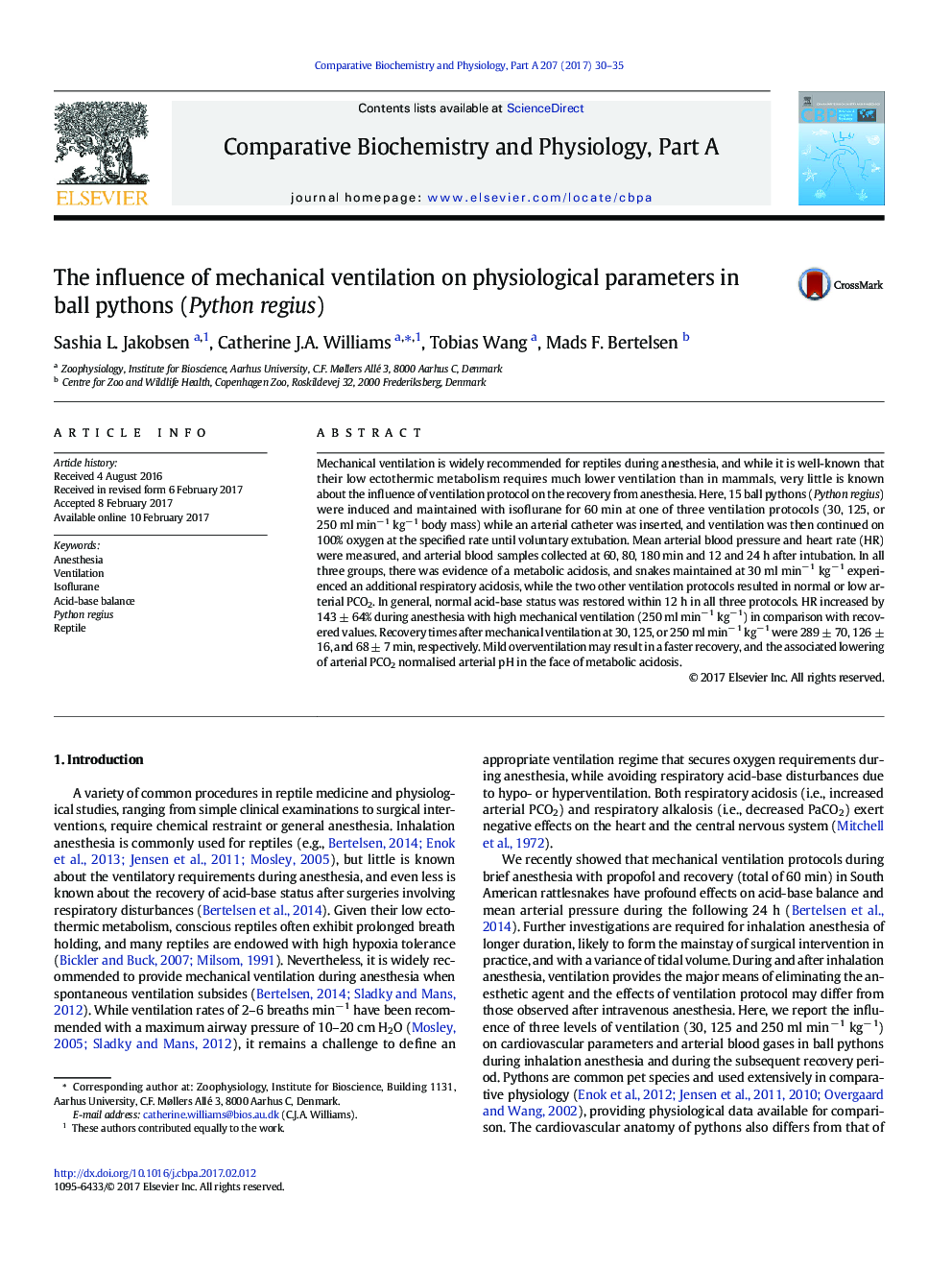| کد مقاله | کد نشریه | سال انتشار | مقاله انگلیسی | نسخه تمام متن |
|---|---|---|---|---|
| 5510333 | 1538980 | 2017 | 6 صفحه PDF | دانلود رایگان |
Mechanical ventilation is widely recommended for reptiles during anesthesia, and while it is well-known that their low ectothermic metabolism requires much lower ventilation than in mammals, very little is known about the influence of ventilation protocol on the recovery from anesthesia. Here, 15 ball pythons (Python regius) were induced and maintained with isoflurane for 60 min at one of three ventilation protocols (30, 125, or 250 ml minâ 1 kgâ 1 body mass) while an arterial catheter was inserted, and ventilation was then continued on 100% oxygen at the specified rate until voluntary extubation. Mean arterial blood pressure and heart rate (HR) were measured, and arterial blood samples collected at 60, 80, 180 min and 12 and 24 h after intubation. In all three groups, there was evidence of a metabolic acidosis, and snakes maintained at 30 ml minâ 1 kgâ 1 experienced an additional respiratory acidosis, while the two other ventilation protocols resulted in normal or low arterial PCO2. In general, normal acid-base status was restored within 12 h in all three protocols. HR increased by 143 ± 64% during anesthesia with high mechanical ventilation (250 ml minâ 1 kgâ 1) in comparison with recovered values. Recovery times after mechanical ventilation at 30, 125, or 250 ml minâ 1 kgâ 1 were 289 ± 70, 126 ± 16, and 68 ± 7 min, respectively. Mild overventilation may result in a faster recovery, and the associated lowering of arterial PCO2 normalised arterial pH in the face of metabolic acidosis.
Journal: Comparative Biochemistry and Physiology Part A: Molecular & Integrative Physiology - Volume 207, May 2017, Pages 30-35
